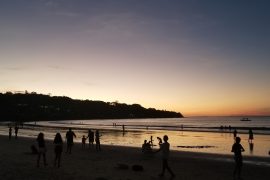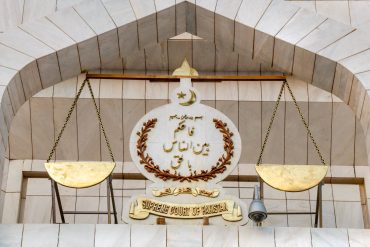Analysing the impact of present tensions between India and Pakistan on the overseas communities and a possible resolution.
In my last post I had provided an analysis of how the events are unfolding in this conflict between India and Pakistan. It was based on my assessments as a student of history and politics, my discussions with knowledgeable friends and conclusions reached emanating from the information and data available. My analysis was subsequently confirmed by the international media, analysts on both sides and research by experts. It left me sad and it left me relieved. I felt relieved that a serious, far reaching disaster that could impact us for generations has been averted. Sad because a very volatile situation still persists that could flare up anytime. One hopes and prays that does not happen.
My last post had quite a wide response. Mostly the readers agreed with the contents. It could be based on the profile of my readership. And there were disagreements too. It is something one expects. But a message from a very close friend shook me up. He had migrated from India and is now a Canadian. He is presently on vacation escaping the vicious Toronto cold wave we are experiencing these days. He wrote “Hafeez we can duke it out on social media or we can sit around a log fire, with beverages of choice, and talk it over”. Bulls eye. It got me thinking. We have very large migrant communities both in Europe and North America. Indians are probably in greater numbers than Pakistanis. However just as in pre-partition era we co-exist very peacefully and most of the time enjoyably.

We give each other space, tolerate and respect each other’s beliefs and way of life. Restaurants offer “Veg” and “non Veg” menus, our kids go to the same schools, soccer Moms chat during the kids’ games. We interact socially, discreetly enjoying “chicken Tikka” if we choose to, yet when such a flare up happens back home, suddenly there are tensions along nationalistic lines. There are embarrassed silences. The hysteria stirred up by media back home leaves its residue. There are pro Kashmiri rallies countered by anti-terrorist demonstrations. Temperatures rise. Communities start looking inwards. I believe there is a strong need for social scientists to study this phenomenon and suggest options to tackle this problem that will only compound with time. It can be defined as a challenge to dilute long distance “tensions through heritage”. It needs to be understood that while we cannot ignore our roots, the immigrants, especially the future generations have to find ways to bond rather than be torn apart over events occurring back home. This requires rational thinking to prevent riding emotional waves, a tall order for South Asians given their genetic constitution.

My friend who gave the above message also forwarded me a post by Madan Gopal Singh, an academic and musician. He talks about a culture of shared co-existence. Elevated existence where we live within each other. We have to rise above the tradition of bigotry and spewing venom against each other. Hate cannot last. We actually mingle through our poetry, our paintings, our images, the beat of a dhamal, the sufi’s twirl. Maulana Rumi gave the message of love in the 13th Century, Baba Bulleh Shah preached negating of self in 18th Century and John Lennon rendered in 20th Century “Imagine where all the people living life in peace” in 1971. They all offer a brilliant option that must be considered for our own peace of mind.
Living an elevated quality of life through peaceful co-existence. It could be just a dream, but there is no harm in dreaming! However speaking to another Indian friend over lunch yesterday brought out another dimension. He pointed out that it may not be possible amongst the 1st generation of migrants. The beliefs, the loyalties, associations run too deep to ignore. It is like the “default” setting of the mind. Valid argument. His suggestion was to avoid discussion of the scratchy topic underlying this dispute, Kashmir. A fair remedy to a very contentious situation!

I respect these diverse opinions and one can choose to be a bystander. But my entire being, my entire adult training, my rational mind, my social conscientiousness prevents me from ignoring this simmering cause. It has caused multiple serious conflicts between two nuclear powers bringing us close to near disaster situations. Serious attempts have been made in the past to sit around the table to resolve. The high point was negotiations between Prime Minister Atal Bihari Vajpayee and President Pervez Musharraf in Agra in July 2001. It was a serious attempt at peace through bilateral efforts to bring stability in the region.
Why can’t this process be reactivated? Now the timing may not be appropriate in view of impending Indian elections, but let me conclude this post by presenting a scenario. Pakistan has a strong elected leadership under Prime Minister Imran Khan who is on the same page with the Pakistan Army, a major stake holder. Prime Minister Narinder Modi is seeking to be re-elected. He is a leader who has great ability to mould public opinion and is the declared leader of hawks- who could impede a peace process. If re-elected he could make history by taking a bold decision to sit around the table. The real stake holders, the Kashmiris and their leaders have a full appreciation of the price they are paying to fuel this bloody conflict. This could be a historic opportunity to end a conflict that could bring lasting peace to the subcontinent. It will serve to release resources and provide hope for the multitudes of poverty ridden billion plus Hindus and Muslims in both countries.




